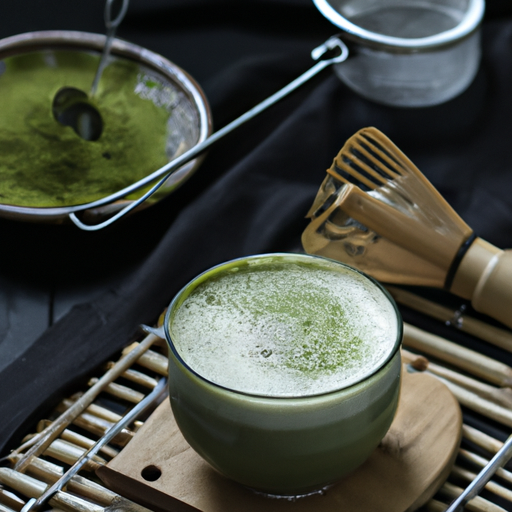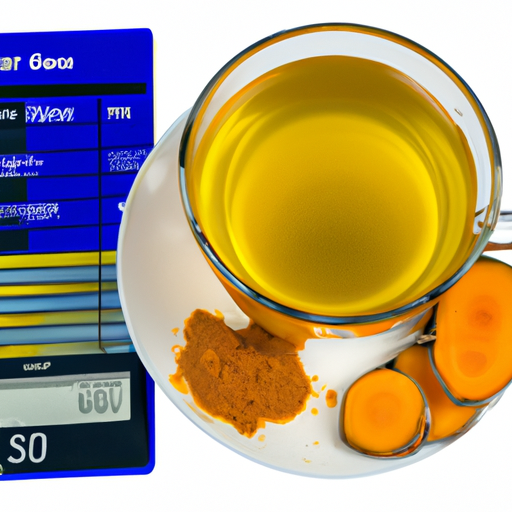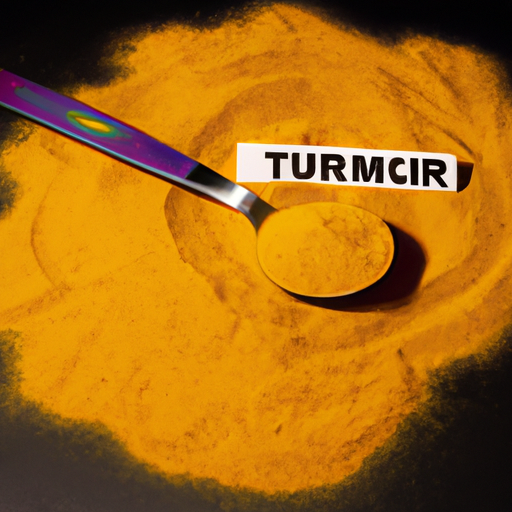Turmeric tea is my preferred drink for when I want something warm and soothing. The bright yellow color and distinctive flavor always make it a delightful treat. But what should be done with the leftover turmeric paste once the tea has been strained?
As it turns out, this paste has numerous uses beyond just making tea. As the saying goes, ‘waste not, want not.’ This phrase perfectly captures the essence of using turmeric paste after making tea.
Not only can it be used as a natural dye for fabrics and paper, but it also has various skincare benefits such as reducing inflammation and improving skin texture. Additionally, turmeric paste is a versatile ingredient in cooking that adds flavor and depth to any dish while providing antioxidant and antibacterial properties to boost your immune system.
In this article, we will explore all these different ways to use turmeric paste after making tea so that you can fully benefit from its goodness.
Key Takeaways
- Turmeric paste can be used for various health benefits such as its anti-inflammatory properties and protection against free radicals.
- The paste can be added to smoothies or used as a cooking ingredient for internal use.
- It can also be used for skin care purposes such as a face mask, spot treatment, or body scrub to improve elasticity and even out skin tone, and reduce fine lines and wrinkles.
- Additionally, turmeric paste can be used as a natural dye for fabrics and paper to create a unique yellowish-brown tint.
Overview of Turmeric Tea and Paste
So now that you’ve made your turmeric tea and strained it, let’s talk about what you can do with the leftover paste.
Turmeric paste is a potent mixture of ground turmeric and water that packs a punch when it comes to health benefits. It has been used for centuries in Ayurvedic medicine to treat various ailments, including inflammation, digestive issues, and skin problems.
One way to use the leftover turmeric paste is to make more turmeric tea recipes by adding a teaspoon or two of the paste into boiling water along with ginger, honey, and lemon. This will not only enhance the flavor but also increase the health benefits of the drink.
Another way to use the paste is for internal use by consuming it directly or mixing it into smoothies or other beverages. The health benefits of turmeric paste for internal use include reduced inflammation, improved digestion, and boosting immunity among others.
Moving on from using turmeric as an internal supplement, did you know that this golden spice can also be used as a natural dye for fabrics and paper?
Natural Dye for Fabrics and Paper
Transform your plain white fabrics and paper into a beautiful golden hue by applying the natural dye made from leftover turmeric paste.
Fabric dyeing with turmeric is an age-old technique used in India to create vibrant and long-lasting colors. The process involves soaking the fabric in a mixture of water and turmeric paste, followed by drying and washing it. This not only adds color to your fabric but also makes it more durable.
Paper staining using turmeric paste is another fascinating craft that you can try at home. Simply mix some leftover turmeric paste with water, dip your paper in it, and let it dry under sunlight or heat. The result will be a unique yellowish-brown tint that looks great on handmade cards, bookmarks, or any other paper crafts.
Using turmeric as a skincare ingredient is also gaining popularity due to its anti-inflammatory properties. But before we dive into this topic, let’s explore another interesting use of turmeric – cooking!
Skincare Ingredient
I love using turmeric paste for my skincare routine! To use it, I simply apply a small amount onto my face and leave it on for about 10 minutes before rinsing off with warm water.
The benefits of using turmeric paste for skincare are numerous – it has anti-inflammatory properties that can reduce redness and irritation, as well as antioxidants that help to brighten and even out skin tone.
How to Use Turmeric Paste for Skincare
Believe it or not, slathering turmeric paste on your face can do wonders for your skincare routine. As a natural ingredient, turmeric is known for its anti-inflammatory and antioxidant properties that can help improve skin texture and reduce the appearance of blemishes. Using turmeric paste as part of your daily skincare routine can be an effective way to achieve a healthy and radiant complexion.
To use turmeric paste for skincare, mix one tablespoon of turmeric with two tablespoons of water until you get a smooth consistency. Apply the mixture evenly on your face and leave it on for about 10-15 minutes before rinsing off with warm water. Here’s a table that summarizes how using turmeric paste in different ways can benefit your skin:
| Method | Benefits |
|---|---|
| Face mask | Reduces acne scars and inflammation; brightens skin tone |
| Spot treatment | Helps clear up blemishes; reduces redness and swelling |
| Lip scrub | Exfoliates dry, chapped lips; softens and moisturizes lips |
| Body scrub | Removes dead skin cells; improves circulation |
Using turmeric paste regularly can help improve the overall health of your skin. In the next section, we will explore more benefits of incorporating this natural ingredient into our daily skincare routine.
Benefits of Using Turmeric Paste for Skincare
Turmeric paste is packed with powerful anti-inflammatory and antioxidant properties that can work wonders for your skin. When used as a skincare ingredient, turmeric paste can help to reduce inflammation, improve skin elasticity, and even out skin tone. The curcumin in turmeric paste has been shown to boost collagen production, which can help to reduce the appearance of fine lines and wrinkles.
One of the best ways to use turmeric paste on your skin is by applying it directly onto acne scars or dark spots. Turmeric’s anti-inflammatory properties can help to calm irritated skin and reduce redness, while its antioxidant activity can help to lighten pigmentation and brighten the complexion. Additionally, turmeric paste may also promote hair growth when applied topically to the scalp due to its ability to improve blood circulation in the area.
Incorporating turmeric paste into your skincare routine is just one way you can benefit from this versatile cooking ingredient. But how else can we use turmeric in our daily lives? Let’s explore some tasty recipes next!
Cooking Ingredient
Using this vibrant paste in your cooking will elevate your dishes to a whole new level of flavor and health benefits. Turmeric paste is a versatile ingredient that can be used in various cooking applications, adding a unique twist to any dish.
Here are some ways you can incorporate turmeric paste into your meals:
- Add it to soups and stews for an extra boost of flavor and color.
- Mix it with yogurt or mayonnaise as a dipping sauce for vegetables or crackers.
- Use it as a marinade for meats before grilling or roasting.
The earthy and slightly bitter taste of turmeric pairs well with many different flavor profiles, making it an excellent addition to both sweet and savory dishes. Plus, the anti-inflammatory properties present in turmeric can help reduce inflammation caused by certain foods.
So not only does turmeric paste add deliciousness to your dishes, but it also provides numerous health benefits. Incorporating turmeric into your daily routine is easy when you have this flavorful paste on hand.
But the benefits don’t stop at just enhancing the taste of your food – next, we’ll explore how using turmeric paste externally on the skin can provide powerful anti-inflammatory properties.
Anti-Inflammatory Properties
Feel the power of turmeric’s anti-inflammatory properties as it soothes and calms your skin, providing relief from irritation and redness. Turmeric has been used for centuries in traditional medicine to treat various ailments due to its active compound curcumin. When applied topically, turmeric paste can help reduce inflammation and improve skin conditions such as acne, eczema, and psoriasis.
In addition to its topical benefits, consuming turmeric tea has also been found to have numerous health benefits. The table below highlights some of the key benefits of drinking turmeric tea:
| Benefit | Description |
|---|---|
| Anti-inflammatory | Helps reduce inflammation in the body |
| Antioxidant | Protects against damage caused by free radicals |
| Digestive aid | Aids digestion and helps alleviate digestive issues |
There are many ways to incorporate turmeric paste into your skincare routine or add turmeric tea into your diet. Check out various recipes online for making your own turmeric paste or trying different variations of turmeric tea blends. In the next section, we will explore how turmeric’s antioxidant properties can further benefit our health.
Antioxidant Properties
Get ready to experience the amazing benefits of turmeric’s antioxidant properties, which can protect your body from harmful free radicals and promote overall health. Turmeric tea is an excellent way to consume turmeric for its antioxidant effects.
By drinking turmeric tea regularly, you can boost your body’s natural defenses against oxidative stress. To get the maximum antioxidant effect from turmeric tea, it’s important to make sure that you’re preparing it correctly. Start by boiling water and adding a teaspoon of ground turmeric powder or freshly grated turmeric root. Let it simmer for about 10 minutes before straining out any solid particles. You can add honey or lemon juice for taste if desired.
Another way to supplement with turmeric is by using the paste as a dietary supplement. The recommended dosage varies depending on the person’s age, health condition, and other factors such as medication interactions. It’s best to consult with a healthcare professional before starting any new supplement regimen.
Now let’s move on to discussing another exciting benefit of turmeric – its antibacterial properties!
Antibacterial Properties
I’m excited to dive into the antibacterial properties of turmeric paste! I’ve heard that it can be an effective natural remedy for bacterial infections, such as those caused by E. coli and Staphylococcus aureus.
Research has shown that curcumin, the active compound in turmeric, has potent antibacterial abilities and may even help combat antibiotic-resistant strains.
Let’s explore how this powerful spice can help fight off harmful bacteria in our bodies.
How Turmeric Paste Can Help with Bacterial Infections
So, you think turmeric paste is only good for adding color to your food? Think again! It can actually help fight off bacterial infections. Turmeric has been used in Ayurvedic medicine for centuries due to its powerful anti-inflammatory and antioxidant properties. The active ingredient in turmeric, curcumin, has been shown to have antibacterial effects as well.
Research has found that turmeric paste benefits the immune system by stimulating its activity against harmful bacteria. Additionally, using turmeric paste for wound healing can also prevent infection and promote faster healing. In a study published in the journal PLOS ONE, researchers found that curcumin was effective against a variety of bacteria strains including Staphylococcus aureus and Escherichia coli. This suggests that incorporating turmeric paste into your daily routine can be an effective way to support your body’s natural defenses against bacterial infections.
As we’ve seen, turmeric paste has numerous benefits when it comes to fighting off bacterial infections. But what does the research say about the antibacterial properties of this spice? Let’s take a closer look at the evidence.
Research on the Antibacterial Properties of Turmeric
Research has shown that turmeric’s active ingredient, curcumin, exhibits antibacterial properties and can effectively combat harmful bacteria such as Staphylococcus aureus and Escherichia coli. Exploring turmeric’s antibacterial properties: a review of current studies suggests that curcumin can disrupt the cell membrane of various bacteria, leading to their death. Additionally, curcumin has been found to inhibit bacterial growth by disrupting important cellular processes.
These findings have significant implications for potential applications in medicine and beyond. Turmeric paste could be used as a natural alternative to conventional antibiotics, which are often associated with side effects and the development of antibiotic resistance.
Future research directions should focus on optimizing the use of turmeric paste as an antibacterial agent and exploring its potential benefits in treating different types of infections such as urinary tract infections or skin infections.
Turmeric’s role in promoting gut health is also worth examining. Recent studies have shown that curcumin may have beneficial effects on the microbiome, which plays a crucial role in digestive health. The impact of turmeric paste on the gut microbiome needs further investigation but it holds potential benefits for digestive disorders such as irritable bowel syndrome or inflammatory bowel disease.
As we explore more natural remedies like turmeric paste for our health concerns, it’s important to continue researching their efficacy and safety before incorporating them into our daily routines.
Natural Remedies
I want to talk about natural remedies using turmeric paste. I’ve learned that turmeric paste can be used for different ailments, such as skin conditions and inflammation.
There has been research done on the efficacy of turmeric paste as a natural remedy, and I’m interested in exploring this topic further.
How to Make Turmeric Paste for Different Ailments
To create turmeric paste for various ailments, I mix the strained turmeric tea with coconut oil and black pepper. This mixture not only enhances the bioavailability of curcumin, the active ingredient in turmeric, but also provides additional health benefits from coconut oil and black pepper.
Here are some ways to use this turmeric paste:
- For joint pain: Apply the paste directly onto the affected area and leave it on for at least 30 minutes before rinsing off.
- For digestive issues: Add a teaspoon of the paste into warm water or any beverage of your choice and drink it twice a day.
- For skin conditions: Mix the paste with honey to create a face mask or apply it directly onto acne-prone areas.
- For immunity boost: Consume half a teaspoon of the paste every morning on an empty stomach.
- In cooking: Use small amounts of the paste as a spice in your everyday meals.
Research has shown that turmeric has anti-inflammatory properties that may help alleviate joint pain and improve digestion. In addition, its antioxidant properties may provide immune support. However, more research is needed to determine its efficacy as a natural remedy.
Research on the Efficacy of Turmeric Paste as a Natural Remedy
Did you know that turmeric paste has anti-inflammatory properties? One study showed it reduced joint pain by 58% in individuals with rheumatoid arthritis. The active ingredient, curcumin, has pain-relieving effects. Turmeric paste can be applied topically to relieve pain and inflammation.
Turmeric paste may also benefit digestive health. Studies suggest curcumin can help treat inflammatory bowel disease by reducing inflammation in the gut. It may also aid digestion by increasing bile production and improving gut motility. However, more research is needed. It’s important to take precautions and consult with a healthcare provider before use.
Precautions
When using turmeric paste, it’s important to be aware of the possible side effects and take necessary precautions.
As someone who has used this natural remedy before, I’ve learned that while it can have many health benefits, there are also risks associated with its use.
It’s crucial to educate oneself on these potential dangers and take steps to minimize them in order to safely reap the benefits of turmeric paste.
Possible Side Effects of Using Turmeric Paste
You may experience some side effects from using turmeric paste, such as digestive issues or skin irritation. It’s important to be aware of these potential risks and take appropriate precautions when using this natural remedy.
Here are four possible side effects of turmeric paste:
-
Upset stomach: Consuming too much turmeric can cause gastrointestinal discomfort, including bloating, gas, and diarrhea.
-
Allergic reactions: Some people may have an allergic reaction to turmeric, which can cause itching, swelling, or difficulty breathing.
-
Skin irritation: Applying turmeric paste topically may cause skin irritation or rashes in some individuals.
-
Blood thinning: Turmeric is known to have blood-thinning properties and should be used with caution if you’re taking other medications that also thin the blood.
It’s important to note that these side effects are rare and usually mild in nature. However, it’s always a good idea to start with small doses of turmeric paste and gradually increase the amount over time while monitoring any adverse reactions.
In order to prevent any negative side effects when using turmeric paste, it’s important to take appropriate precautions beforehand. This includes consulting with your healthcare provider before incorporating it into your diet or skincare regimen and starting with small doses until you know how your body will react.
By being mindful of dosage recommendations and monitoring any potential side effects closely, you can safely enjoy the many benefits that turmeric has to offer without putting your health at risk.
Precautions to Take When Using Turmeric Paste
To ensure safe usage of turmeric paste, it’s important to consult with a healthcare provider and start with small doses while monitoring any potential adverse reactions. Turmeric paste can be used in various ways, including as a face or body mask, an ingredient in cooking, or even as a natural dye. However, it’s crucial to take precautions when using the paste.
One precaution is proper storage. Turmeric paste should be stored in an airtight container in the refrigerator and used within one week.
When applying the paste to the skin or hair, it’s essential to do a patch test first to check for any allergic reactions. It’s also important to avoid getting turmeric on clothing or fabrics because it can stain permanently.
By taking these precautions and consulting with a healthcare provider before use, you can safely enjoy the benefits of turmeric paste.
Frequently Asked Questions
Can turmeric tea and paste be used for hair care?
I love using turmeric tea and paste for my haircare routine! Turmeric’s anti-inflammatory properties can soothe an itchy scalp, while the paste’s antimicrobial benefits can fight dandruff. Try these turmeric paste recipes for a healthy scalp and luscious locks.
How long can turmeric paste be stored in the fridge?
Turmeric paste can be stored in the fridge for up to 2 weeks. To preserve it, store in an airtight container and avoid introducing moisture. Use for cooking or as a topical treatment for skin issues.
Can turmeric paste be used externally for treating wounds?
I stumbled upon turmeric paste while searching for natural pain relief. Research shows it has anti-inflammatory properties and can aid wound healing. Apply a small amount externally to the affected area for best results.
Can turmeric paste be used as a face mask?
Yes, turmeric paste can be used as a face mask. The benefits of turmeric for skin include reducing inflammation and redness, fighting acne, and improving overall complexion. Mix with honey or yogurt for added benefits.
Can turmeric paste be added to smoothies or other drinks?
Yes, turmeric paste can be added to smoothies or other drinks. It is also used in baking and savory dishes for its flavor and health benefits. However, it’s important to use it in moderation as it has a strong taste and may cause staining.
Conclusion
In conclusion, turmeric tea and paste have a multitude of uses beyond just enjoying a warm cup of tea. The paste can be used as a natural dye for fabrics and paper, adding a vibrant yellow hue to any project. It also has numerous benefits for skincare, cooking, and as a natural remedy for various ailments.
For example, my friend recently suffered from inflammation due to an injury and was hesitant to take over-the-counter medication. I recommended trying turmeric paste applied directly to the affected area. After using it consistently for a few days, she noticed a significant reduction in swelling and pain. This personal experience shows the effectiveness of turmeric’s anti-inflammatory properties.
Overall, incorporating turmeric into your daily routine can provide numerous health benefits while also being versatile in its uses. As with all natural remedies, it’s important to use caution and consult with a healthcare professional before use.










